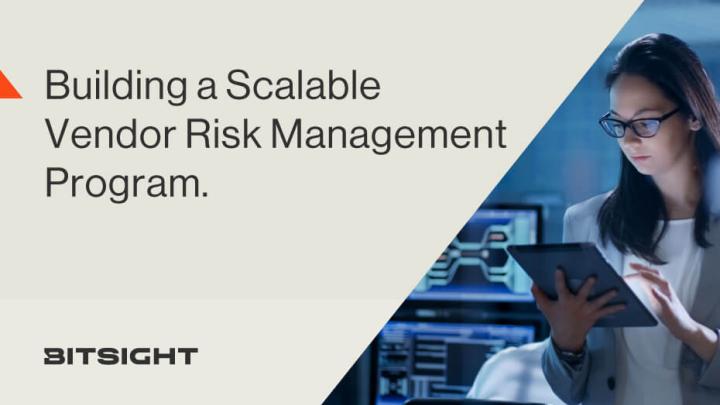Is your business adopting vendors faster than you can address their security issues? Get the keys to scaling your Vendor Risk Management program, from assessment to ongoing monitoring, and proactively mitigate risk in an ever-expanding third-party network.
5 Keys to Building a Scalable VRM Program


Most organizations cover vendor risk management (VRM) with emails and spreadsheets, or with dedicated tools. However, programs typically face challenges around efficiency and a lack of visibility that makes it difficult to report on wins and results.
How can you build the foundation for a vendor risk management program that is scalable as your business grows, and effectively protects your growing supply chain?
The Fundamentals of a Scalable Vendor Risk Management Program
A scalable VRM program is one that continuously detects, monitors, and mitigates vendor risk. It goes beyond initial assessments to constantly reassess and act on vendor risk, with the ultimate goal of understanding how the use of third-party vendors creates risk and how to remediate it.
Most importantly, it scales with business growth, managing thousands of vendors as effectively as it manages ten.
Why Scalable VRM is Critical Today
As organizations grow and expand their operations, outsourcing and engaging with more third-party vendors is a logical step to increase efficiency, deliver better customer experiences, and reduce costs. But the tools and processes in place to assess and reduce the inherent risks of those vendors often aren't enabled to scale as fast.
There are three main factors that make scalable VRM critical today:
1. More vendors are entering the digital supply chain fast. In fact, 79% of businesses say they are adopting technologies faster than they can address related security issues.
2. The risk of suffering a third-party data breach is going up. 73% of organizations have experienced at least one significant disruption caused by a third party, and the figure will likely grow as reliance on third parties increases.
3. Regulation is forcing companies to take action. Gartner predicts that 75% of users will be protected by privacy and cybersecurity regulation by the end of 2023. This, combined with strict industry standards and customer demands for stronger security postures, will add pressure to third-party risk management teams.
Your program needs to keep up with the growth of your vendor ecosystem and comply with industry standards, but the manual, traditional approach based on emails and spreadsheets can’t keep up.
5 Keys to Scaling Your VRM Program
The greatest opportunity that organizations have is twofold: to automate and reduce manual and repetitive work involved in vendor risk assessments, thus moving to continuous vendor risk monitoring and away from a “point-in-time” assessment approach (traditionally, once a year).
Our ebook, “Five Keys to Building a Scalable VRM Program”, dives into five key initiatives that will help you create a sustainable and scalable vendor risk management program from the ground up:
1. Create the program foundation
This includes building the VRM business case and developing policies regarding internal workflow, reporting, governance, and decision-making.
2. Map, categorize, and prioritize your vendor inventory
Start by reviewing your organization’s existing vendor landscape and identify which ones have access to sensitive data, which ones need to comply with specific standards, and which are the most critical to your business operations.
3. Develop a scalable risk assessment workflow
Most of the struggles of traditional VRM programs can be solved with automation and customization within the risk assessment process, plus a range of capabilities that dedicated tools offer, which make it easy to scale the workflow.
4. Utilize objective data and analytics to increase confidence
Security questionnaires are a great tool to assess vendors, but should not be the only one used to make decisions. Ideally, your VRM program should perform additional assessments, leverage external data such as security ratings, and request additional documentation, such as certifications, attestations, and industry-specific standards.
5. Measure and report on program wins
Delivering quantifiable results will help your VRM program remain relevant and effective. Be consistent in offering periodic updates on productivity, efficiency, and effectiveness to underscore the value of the program.
Our ebook offers details, tips, and practical examples for each one of these five keys, empowering your team to solve the problems of legacy VRM programs, create sustainability and scalability, and get buy-in from leadership.
For a variety of reasons, traditional vendor risk management programs are not effective at mitigating risk in ever-expanding third-party networks. They can be limited in scope and error prone, have limited reporting capabilities, and employ a one-size-fits-all approach, subjecting all vendors to the same set of questions. What’s more, they require a lot of resources, which is likely to become an obstacle to scale.
It is now time to shift from one-off questionnaires to a new approach that is less time-consuming and resource-intensive for both organizations and their vendors.
